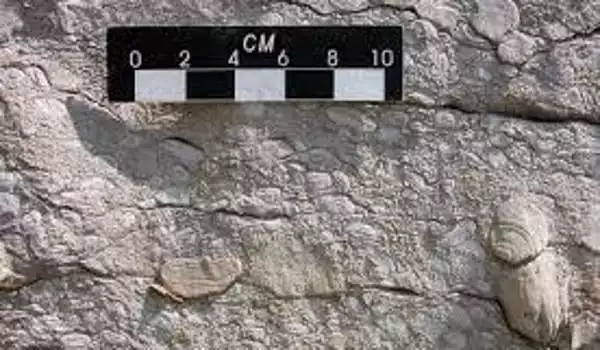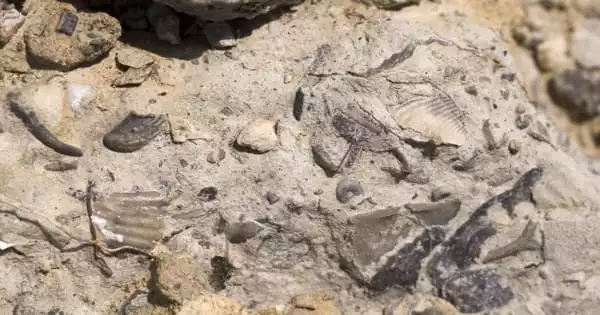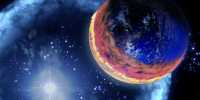New research sheds light on the first and oldest of the ‘big five’ extinctions. During that time, approximately 85 percent of marine species, the majority of which lived in shallow oceans near continents, vanished.
We’ve all heard that dinosaurs died in mass extinction. But were you aware that there have been other mass extinctions? There are five most significant mass extinctions, known as the “big five,” in which at least three-quarters of all species on Earth faced extinction during a specific geological period. With current trends in global warming and climate change, many scientists believe we may be entering the sixth.
Discovering the root cause of Earth’s mass extinctions has long been a hot topic for scientists, as understanding the environmental conditions that led to the extinction of the majority of species in the past may help prevent a similar event from occurring in the future.
A group of scientists from Syracuse University’s Department of Earth and Environmental Sciences, the University of California, Berkeley, and the University of California, Riverside, as well as Université Bourgogne Franche-Comté, the University of New Mexico, the University of Ottawa, the University of Science and Technology of China, and Stanford University, recently co-authored a paper on the Late Ordovician mass extinction (LOME), the first, or oldest, of the “big five” extinctions. During that time, 85 percent of marine species, the majority of which lived in shallow oceans near continents, vanished.
One of the major debates surrounding LOME is whether a lack of oxygen in seawater caused the mass extinction during that time period. The team combined geochemical testing with numerical simulations and computer modeling to investigate this question.
Zunli Lu, professor of Earth and environmental sciences
Alexandre Pohl of UC Riverside (now a postdoctoral research fellow at Université Bourgogne Franche-Comté in Dijon, France) and his co-authors studied the ocean environment before, during, and after the extinction to determine how the event brewed and was triggered. Their findings will be published in the journal Nature Geoscience.
To paint a picture of the oceanic ecosystem during the Ordovician Period, Seth Finnegan, associate professor at UC Berkeley, says that seas were rich in biodiversity. The oceans had some of the first reefs formed by animals, but there were not many vertebrates.
“If you went snorkeling in an Ordovician sea, you would have seen some familiar groups like clams, snails, and sponges, but also many other groups that are now very low in diversity or extinct, like trilobites, brachiopods, and crinoids,” Finnegan says.
Unlike rapid mass extinctions, such as the Cretaceous-Tertiary extinction event that wiped out dinosaurs and other species 65.5 million years ago, Finnegan claims LOME occurred over a long period of time, with estimates ranging from less than half a million to nearly two million years.

One of the major debates surrounding LOME is whether a lack of oxygen in seawater caused the mass extinction during that time period. The team combined geochemical testing with numerical simulations and computer modeling to investigate this question.
Zunli Lu, professor of Earth and environmental sciences at Syracuse University, and his students measured iodine concentrations in carbonate rocks from that time period, revealing important information about oxygen levels at various ocean depths. Iodine concentrations in carbonate rocks serve as a proxy for changes in oceanic oxygen levels throughout Earth’s history.
Their findings, when combined with computer modeling simulations, suggested that there was no evidence of anoxia or a lack of oxygen, worsening during the extinction event in the shallow ocean animal habitat where most organisms lived, implying that climate cooling during the Late Ordovician period, combined with other factors, was most likely responsible for LOME.
On the other hand, there is evidence that deep ocean anoxia expanded at the same time, a mystery that cannot be explained by the classic model of ocean oxygen, according to climate modeling expert Alexandre Pohl.
“Upper-ocean oxygenation in response to cooling was expected,” Pohl says, “because atmospheric oxygen dissolves preferentially in cold waters.” “However, we were surprised to see expanded anoxia in the lower ocean because anoxia has generally been associated with volcanism-induced global warming in Earth’s history.”
They attribute deep-sea anoxia to seawater circulation in the world’s oceans. According to Pohl, it is critical to remember that ocean circulation is a critical component of the climatic system. He was part of a team led by UC Riverside professor and senior modeler Andy Ridgwell, whose computer modeling results show that climate cooling likely altered ocean circulation patterns, halting the flow of oxygen-rich water from shallow seas to deeper seas. Recognizing that climate cooling can lead to lower oxygen levels in some parts of the ocean, according to Lu, is a key takeaway from their research.
“For decades, the dominant school of thought in our field has been that global warming causes the oceans to lose oxygen, affecting marine habitability and potentially destabilizing the entire ecosystem,” Lu says. “In recent years, mounting evidence has pointed to several episodes in Earth’s history when oxygen levels also fell in cooling climates.”
While the causes of the Late Ordovician extinction have not been fully resolved, nor will they be for some time, the team’s study rules out changes in oxygenation as a single explanation for this extinction and adds new evidence supporting temperature change as the killing mechanism for LOME.
Pohl believes that as better climate data and more sophisticated numerical models become available, they will be able to provide a more robust representation of the factors that may have contributed to the Late Ordovician mass extinction.















